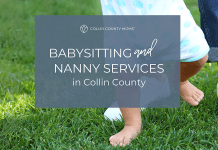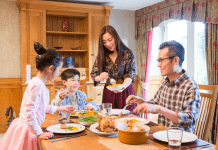There are a lot of heavy issues facing our world right now, and many parents are looking for ways to teach their children about these topics. I’ve found that teaching my children about the power of their voice and how they can use it to be a force for good in the world has worked well for our family.
Helping Kids Use Their Voice
There are many ways we can help our children use their voice. One way is to teach them about our right to protest things we deem unjust. Inviting them to physically and vocally express themselves during a protest can be a compelling experience. Many parents have taken their children to local protests, but if that isn’t something you think would be feasible for your family, you can consider attending or organizing a kid-friendly protest. I recently brought my kids to a kid-friendly one and learned a lot about how a protest can be tailored to their needs and be a positive, educational experience.
6 Tips for a Kid-Friendly Protest
1. Choose a location and date.
Find a public area that will be convenient, easy to find, and have plenty of room for people. Be sure to know your city’s laws and policies for where a group can and cannot congregate. Choose a date and time that will allow for the greatest number of families to attend. Call and let your local authorities know what you are planning. They will inform you if there are any other events going on that day and whether or not you will need permits. They may also send some officers to the event.

2. Let kids help make signs.
Kids love to create! Having them make posters with their own unique messages gives them another opportunity to express themselves. Seeing their hearts and minds shared on each poster makes the message all the more powerful. Making the signs also helps build anticipation for the event.

3. Organize activities and a schedule for the event.
As we all know, kids’ attention spans can be quite short. Take this into account when you are deciding how to structure the protest. If you plan to do a march, consider keeping it fairly short for the younger kiddos. Sidewalk chalk is also a great tool to keep kids busy and give them another way to use their voice.

Choose an emcee and have them direct the children through the various activities, as well as explain the reason behind the protest in an age-appropriate manner. Some short and simple chants will also help keep kids involved and focused on what is going on. Have a table with extra posters and markers in case anyone forgot to bring a sign!

4. Safety, safety, safety!
In addition to choosing a safe location, scout out the area to see if there are any spaces that need to be blocked off for safety purposes. You can use cones to create pathways or barriers. In the pandemic, it’s also important to follow any health guidelines that are recommended, such as social distancing and wearing masks to avoid spreading germs. We used cones and sidewalk chalk to mark approximately how far away families should stand from one another.

5. Get the word out!
Share the event with all your local friends and neighbors! Social media is a great resource to help you do that, especially through local Facebook groups. You can also contact local media outlets to ask if they will share information about your event.

6. Reflect on the experience.
Talk with your children after the event to see what their thoughts are. Ask them if they have any questions. Take a few moments to discuss what other ways your kids might like to speak out and use their voice.
Some may think children are too young to understand complex issues in our society, but I think they can comprehend a lot more than we sometimes give them credit for. Breaking down issues into terms they can understand (children’s books can help) can go a long way in laying the foundation of knowledge that can be built upon as they grow older.
Children’s voices may be small, but they are still important. By involving them in events like protests, we teach them that their voice matters. We can show them how to use it and what it looks like to speak up for what you think is right. And most importantly, they will know that you are never too young to stand in solidarity with others.














